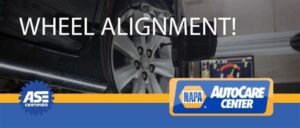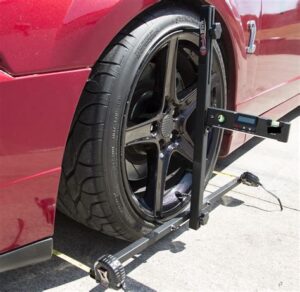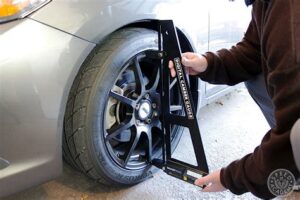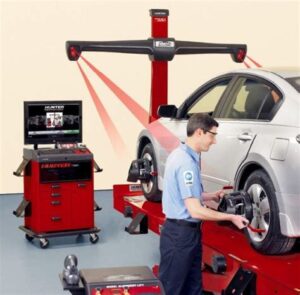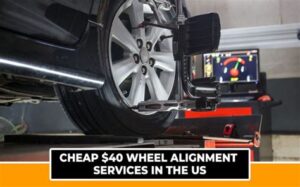Rally Car Alignment: Optimizing Performance for Every Turn
In the thrilling world of rally racing, precision and performance are paramount. One crucial aspect that often goes unnoticed is rally car alignment, a factor that can significantly impact your vehicle’s handling and stability on challenging terrains. Proper alignment not only enhances your car’s responsiveness but also extends the lifespan of your tires and suspension components. In this article, we’ll delve into the importance of rally car alignment, explore common signs indicating a need for adjustments, and highlight the benefits of maintaining accurate alignment. Whether you’re a seasoned driver or a passionate enthusiast, understanding and achieving optimal rally car alignment is essential for navigating the twists and turns that lie ahead. Get ready to unlock your rally car’s full potential and elevate your racing experience!
Understanding The Importance Of Rally Car Alignment
Proper alignment is crucial for any vehicle, but it holds particular significance in the realm of rally car racing. The rigorous conditions of rally stages, including diverse terrains and unpredictable weather, demand precision in every aspect of the car’s setup. When your rally car’s wheels are not aligned correctly, several issues can arise that not only affect performance but also compromise safety.
First and foremost, misalignment can lead to uneven tire wear. This not only shortens the lifespan of your tires but also can drastically affect grip levels, which are vital for the high speeds and sharp turns encountered in rally racing. Proper rally car alignment ensures that all four tires make even contact with the road, maximizing traction and maintaining stability during races.
Moreover, accurate alignment enhances the vehicle’s handling characteristics. Rally cars are designed for agility and responsiveness, and any misalignment can result in a delayed or unresponsive reaction when steering inputs are made. This can lead to a loss of control, which is undesirable in competitive situations where split-second decisions are often necessary.
Additionally, maintaining correct alignment allows for better fuel efficiency. A rally car that is out of alignment may require more power to push against drag created by improper tire angles, which can increase fuel consumption—an important consideration during long rally events where pit stops are limited.
In essence, understanding the importance of rally car alignment serves as the foundation for ensuring overall vehicle performance, optimizing tire life, and enhancing driver confidence on the course. A well-aligned rally car not only performs better but also promotes safety and efficiency, making it a crucial aspect that should never be overlooked.
Common Signs Your Rally Car Needs Alignment
Proper alignment is crucial for the performance and safety of your rally car. If you’re experiencing any of the following issues, it may be a sign that your vehicle requires an alignment check:
- Uneven Tire Wear: Inspect your tires regularly. If you notice uneven or excessive wear on the inner or outer edges of your tires, it could indicate misalignment.
- Vehicle Pulling: If your rally car tends to drift or pull to one side while driving on a straight road, it’s a strong indicator of alignment issues.
- Steering Wheel Off-Center: When your steering wheel is not perfectly centered while driving straight, it’s a sign that your wheels might not be aligned correctly.
- Increased Steering Response: If you experience excessive sensitivity or responsiveness in your steering, it can be a symptom of poor alignment as well.
- Vibration or Noise: Unusual vibrations in the steering wheel or a roaring sound while driving can suggest that the alignment is off.
Recognizing these signs early can help you address alignment issues before they lead to more serious problems with your rally car, ensuring you maintain optimal performance and safety on the trails.
Benefits Of Proper Rally Car Alignment
Proper alignment of a rally car significantly enhances both performance and safety during competitions. Below are the key benefits that come with maintaining accurate alignment for your rally car:
| Benefit | Description |
|---|---|
| Improved Handling | Accurate alignment ensures better steering responsiveness, allowing drivers to navigate challenging terrain with greater precision. |
| Tire Longevity | Proper alignment helps prevent uneven tire wear, maximizing the lifespan and performance of your tires, which are critical for a rally car. |
| Enhanced Fuel Efficiency | Correct alignment reduces rolling resistance, enabling your rally car to achieve better fuel economy, an important factor during long races. |
| Safety Improvements | Consistent alignment minimizes the risk of losing control, making it safer for the driver and co-driver while tackling difficult rally stages. |
| Optimized Suspension Performance | With proper alignment, the suspension system functions more effectively, providing better stability and comfort on rough surfaces. |
In summary, the benefits of maintaining proper alignment for your rally car extend beyond mere performance; they ensure safety, efficiency, and better handling capabilities essential for any rally enthusiast or competitive driver.
How To Achieve Accurate Rally Car Alignment
Achieving accurate rally car alignment is essential for improving handling, stability, and tire longevity during races. Here’s a detailed guide on how to obtain the perfect alignment for your rally car.
1. Invest in Reliable Equipment: Utilize quality alignment tools and equipment, such as a laser alignment system or an alignment rack. Accurate measurements are crucial, especially in the dynamic environment of rally racing.
2. Follow the Manufacturer’s Specifications: Refer to the manufacturer’s guidelines for your specific rally car model. This ensures that the alignment settings, such as camber, caster, and toe angles, meet the required standards for optimal performance.
3. Conduct a Thorough Inspection: Before making adjustments, check for worn-out suspension components, damaged tires, or bent chassis parts. Any issues here can affect alignment outcomes, so fixing them beforehand is essential.
4. Adjust the Toe Settings: Toe alignment is a critical adjustment. Modify the settings to either slight toe-in or toe-out based on your driving style and terrain. Adjustments here can significantly impact your rally car’s steering response.
5. Set the Camber Angle: Camber affects how tire contact the road. A negative camber is often recommended for rally cars to enhance grip during tight cornering. Make the necessary adjustments to achieve the desired angle.
6. Configure the Caster Angle: Caster influences straight-line stability and steering effort. Opt for a positive caster angle as it typically provides improved steering feel and stability for rally conditions.
7. Test Drive After Adjustments: Once you’ve made the adjustments, take your rally car for a test drive. Pay attention to handling, steering response, and tire wear patterns. If necessary, fine-tune the settings further based on your observations.
8. Regular Recheck Alignment: Regularly check and recalibrate your rally car’s alignment, especially before major events or after extensive use. Consistent checks help maintain performance levels and ensure safety during races.
By following these steps diligently, you can ensure that your rally car maintains its peak performance and responsiveness on challenging terrains.
Maintaining Rally Car Alignment For Optimal Performance
Proper maintenance of your rally car‘s alignment is crucial to ensure optimal performance in the demanding environments of rally racing. Regular checks and adjustments not only enhance handling and stability but also prolong the lifespan of your tires and suspension components. Here are key practices to maintain your rally car alignment:
- Regular Inspections: Schedule routine alignment checks before and after competitions or after significant impacts, such as hitting a curb or pothole.
- Monitor Tire Wear: Keep an eye on your tires for uneven wear patterns, which can indicate misalignment. This can help you catch issues early.
- Adjust As Needed: Make quick adjustments as needed, particularly after changes in weather conditions or terrain. Changes in temperature can affect tire pressure and suspension setup.
- Expert Evaluation: If your rally car is not handling as expected, consult with an alignment specialist who understands the unique demands of rally cars.
By implementing these practices, you can maintain the alignment of your rally car effectively and enhance your car’s performance on any rally stage.
Frequently Asked Questions
What is rally car alignment?
Rally car alignment refers to the adjustment of the angles of the wheels to ensure optimal contact with the road, enhancing handling, stability, and tire wear during a rally race.
Why is proper alignment important for rally cars?
Proper alignment is crucial for rally cars as it improves cornering performance, maximizes tire contact with the ground, and ensures the vehicle responds accurately to steering inputs, which is vital in challenging rally conditions.
How often should rally car alignment be checked?
Rally car alignment should be checked regularly, especially before major events or after significant impacts, as rough terrains and varying conditions can easily affect wheel angles.
What components are adjusted during the alignment process?
During the alignment process, key components adjusted include camber, caster, and toe angles, each affecting how the car handles and wears its tires.
Can incorrect alignment affect rally car performance?
Yes, incorrect alignment can lead to poor handling, uneven tire wear, decreased traction, and overall compromised performance during a rally.
What signs indicate that a rally car may need an alignment?
Signs that a rally car may need an alignment include uneven tire wear, the car pulling to one side, or the steering wheel being off-center while driving straight.
How can a driver maintain proper alignment in a rally car?
Drivers can maintain proper alignment by regularly checking tire pressures, conducting pre-race inspections, and having periodic alignments performed by professionals after hard use or damage.
